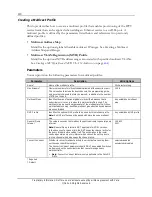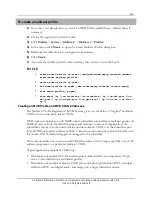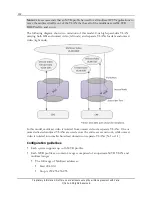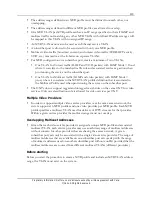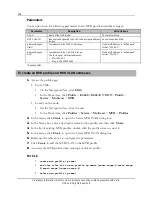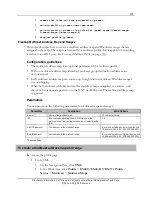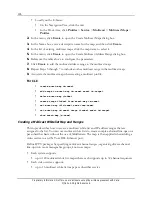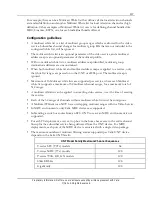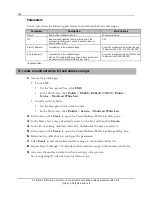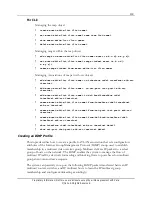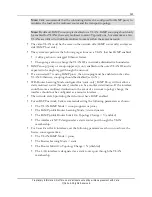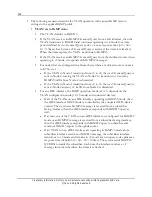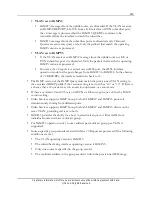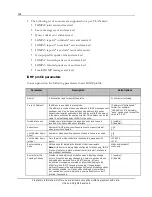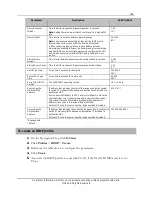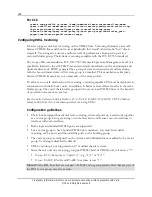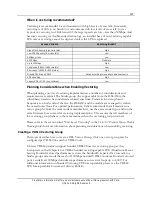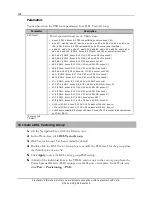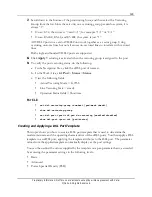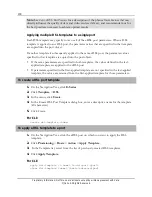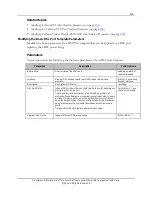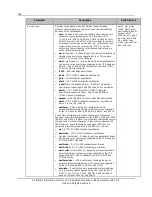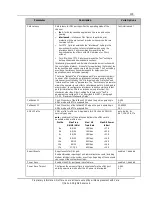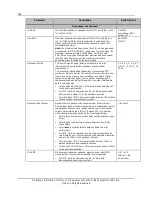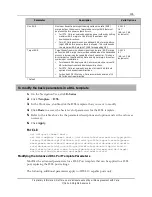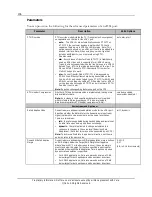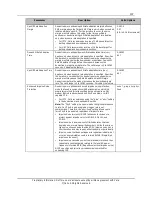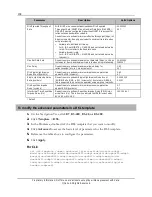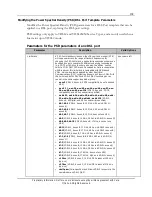
124
Proprietary Information: Not for use or disclosure except by written agreement with Calix.
© Calix. All Rights Reserved.
The following set of counters are supported on a per-VLAN basis:
IGMPv2 joins sent and received
Leave messages sent and received
Query solicits sent and received
IGMPv3 reports "to include" sent and received
IGMPv3 reports "to exclude" sent and received
IGMPv3 reports "is exclude" sent and received
Group-specific queries sent and received
IGMPv2 General queries sent and received
IGMPv3 General queries sent and received
Invalid IGMP messages received
IGMP profile parameters
You can provision the following parameters for an IGMP profile:
Parameter
Description
Valid Options
Name*
A descriptive name to identify the profile.
31-character text string
Proxy IP Address*
IP address to use when in proxy mode.
This address is used as the source address in IGMP messages sent
upstream, and it is also used as the source address for queries
downstream towards subscribers. It should be a valid IPv4 address
in the same subnet as the upstream router. This address can be the
same IP as the Management VLAN for the node.
IP address in "dotted quad"
format. For example:
"192.168.1.100". Alternately,
"none" can be used to reset the
value to "0.0.0.0"
Immediate Leave
Whether a multicast stream is dropped as soon as a Leave is
received. May be overridden per interface.
Y (enable)
N (disable) ‡
Robustness
Number of IGMP group-specific queries sent per query interval
when proxy is configured.
1-10
1 ‡
Last Member Query
Count
Number of group-specific queries sent when a Leave is received.
1-8
2 ‡
Last Member Query
Interval
Time to wait in milliseconds for a response to a group-specific
query.
100-5000
1000 ‡
Router Learning
Mode
Method used for learning the location of upstream routers.
Note:
With Router Learning Mode configured for ‘static-only,’ IGMP
Proxy will not allow a static multicast router (‘mrouter’) interface to
be a multicast destination.
static-and-dynamic ‡
static-only
Router Solicit On
Topology Change
Whether to send a Query Solicitation when a topology change
occurs. When the topology changes in a network, such as when a
link is added or removed from an RSTP domain, a Query
Solicitation message is generated on all ports belonging to the
VLAN for which IGMP snooping is enabled. If the upstream
multicast Querier in the network supports Query Solicitation and has
the function enabled, it will respond by sending a General Query
out, causing devices to re-adjust to a new multicast source port
location, if necessary.
Y (enable) ‡
N (disable)

